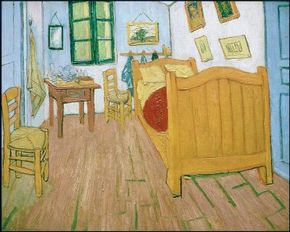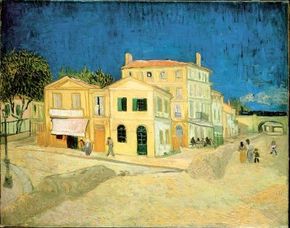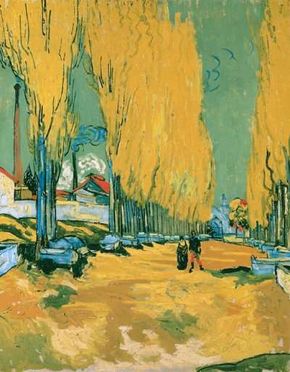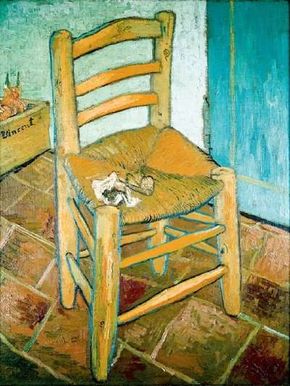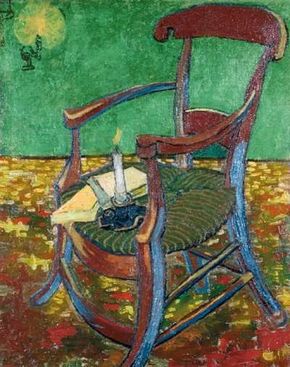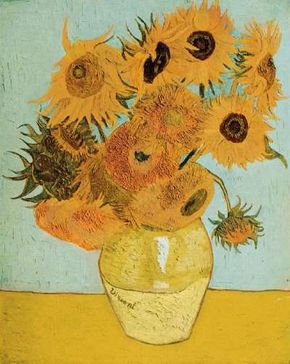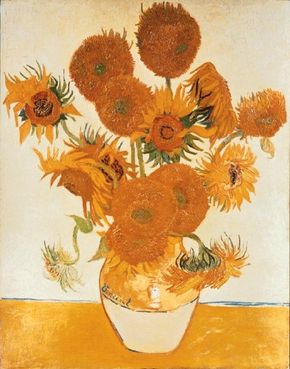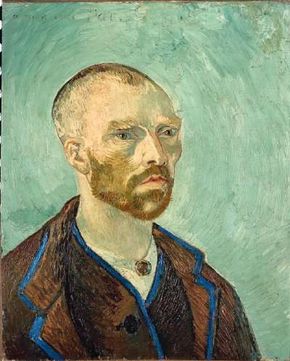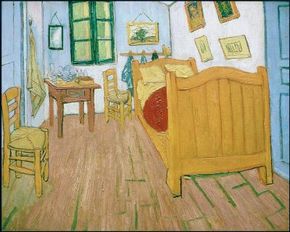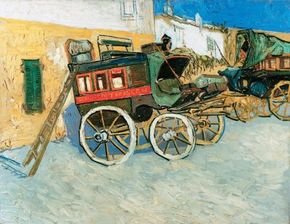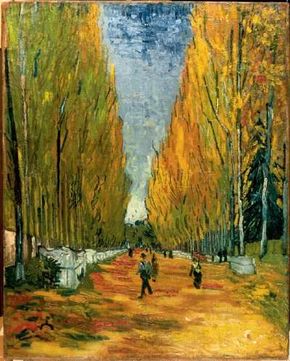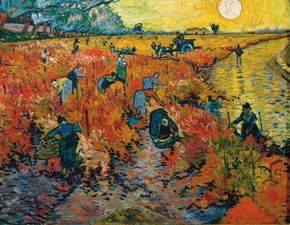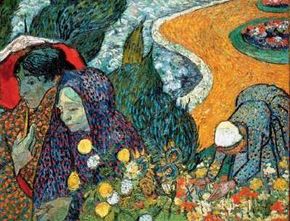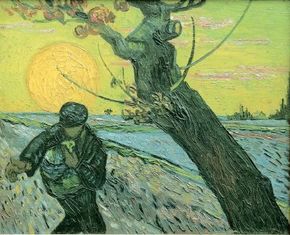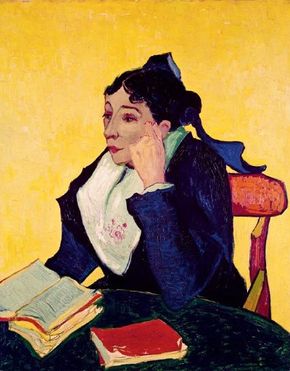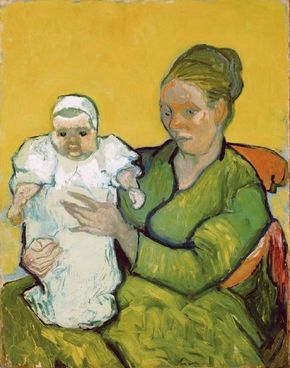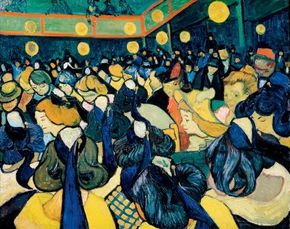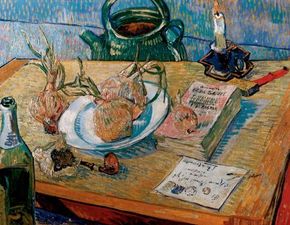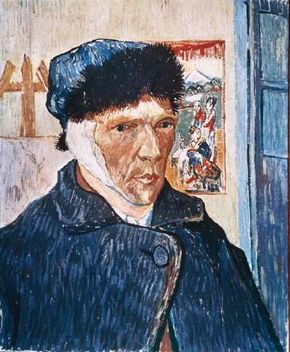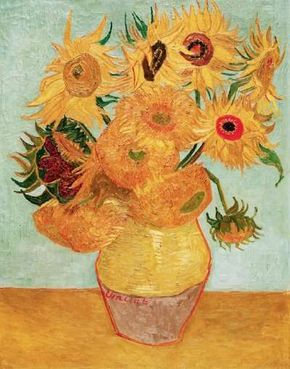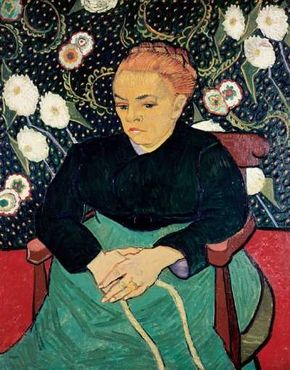In May 1888, Vincent van Gogh leased four rooms in a two-story building on the Place Lamartine in Arles, France. He called it the Yellow House, after the warm, buttery color of paint on the exterior walls, and he would soon paint a portrait of the house in the tones of yellow that he now regarded as his signature color. Vincent van Gogh planned to cover the interior walls of the Yellow House with paintings of sunflowers.
Throughout his first summer in the Yellow House, Vincent van Gogh keenly anticipated the arrival of Paul Gauguin, who, after many delays and excuses, arrived at Vincent van Gogh's door on October 23, 1888. Eager to work with his new companion, Vincent van Gogh escorted his guest to his favorite locations, but soon their conflicting attitudes toward art led to heated debates. While Vincent van Gogh believed that he needed to work fast, in the open air in front of his subject, Paul Gauguin advocated a slower approach.
Advertisement
In the aftermath of Vincent van Gogh's self-mutilation and Paul Gauguin's hasty departure from Arles, Vincent van Gogh became convinced that if he could return to his painting he could also regain his stability and his health. On January 4, 1889, Vincent van Gogh left the hospital and returned to the Yellow House, where he painted simple still lifes, self-portraits, and copies of his own sunflower bouquets. Through these familiar images, Vincent van Gogh reflected on his brief but life-changing encounter with Paul Gauguin.
Below you will find links to more detailed pages about some of Vincent van Gogh's most famous paintings from his time at the Yellow House. Follow them to learn more about Vincent van Gogh.
The Yellow House: The Yellow House, by Vincent van Gogh, depicts the home where van Gogh lived while in Arles. Learn about The Yellow House, which was painted in 1888.
Les Alyscamps: In Les Alyscamps, by Vincent van Gogh, the post-Impressionist explores the theme of companionship. Read about van Gogh's Les Alyscamps, which is notable for its poignancy.
Van Gogh's Chair: Van Gogh's Chair, by Vincent van Gogh, was one of two portraits van Gogh painted to depict his relationship with Paul Gauguin. Learn about Van Gogh's Chair, a rather unusual "portrait."
Gauguin's Chair: Vincent van Gogh's Gauguin's Chair is the companion piece to Van Gogh's Chair. Learn about van Gogh's 1888 work, Gauguin's Chair.
Still Life: Vase with Twelve Sunflowers: In Still Life: Vase with Twelve Sunflowers, Vincent van Gogh depicts the flowers that would soon become associated with his name. Read about Still Life: Vase with Twelve Sunflowers.
Sunflowers: Sunflowers, by Vincent van Gogh, finds the artist continuing his interest in depicting the bright yellow flowers. Read about Sunflowers, which van Gogh considered his best work.
Self-Portrait Dedicated to Paul Gauguin (Bonze): Self-Portrait Dedicated to Paul Gauguin (Bonze), by Vincent van Gogh, was completed just prior to Paul Gauguin's arrival in Arles. Learn about Self-Portrait Dedicated to Paul Gauguin (Bonze), which shows van Gogh's view of Gauguin as a mentor.
The Bedroom: The Bedroom, by Vincent van Gogh, depicts van Gogh's bedroom at the Yellow House in Arles. Read about The Bedroom.
Tarascon Dilegence: Vincent van Gogh's interest in intense and expressive use of color is apparent in Tarascon Dilegence. Learn about Tarascon Dilegence, which Vincent van Gogh painted as he waited for Paul Gauguin to visit him in Arles.
Les Alyscamps: Les Alyscamps, by Vincent van Gogh, is another view of one of van Gogh's favorite locales in southern France. Read about Les Alyscamps, which evidences the emotional energy in van Gogh's art.
The Red Vineyard: Vincent van Gogh's The Red Vineyard is one of the paintings the artist completed during Paul Gauguin's stay at the Yellow House. Read about The Red Vineyard, which exhibits Gauguin's influence on Vincent van Gogh's painting.
A Memory of the Garden at Etten: A Memory of the Garden at Etten, by Vincent van Gogh, shows the artist's mother and sister in a garden from his youth. Read about A Memory of the Garden at Etten -- a response by van Gogh to some of Paul Gauguin's suggestions.
The Sower: Vincent van Gogh's The Sower reflects his long-held interest in Japanese prints. Read about The Sower.
L'Arlesienne: Madame Joseph-Michel Ginoux: L'Arlesienne: Madame Joseph-Michel Ginoux, by Vincent van Gogh, is a portrait of the proprietress of a local café. Read about L'Arlesienne: Madame Joseph-Michel Ginoux, which van Gogh completed in less than an hour.
Madame Roulin with her Baby Marcelle: Vincent van Gogh's 1888 painting of Madame Roulin with her Baby Marcelle shows van Gogh's strong belief in portraiture as an art form. Read about Madame Roulin with her Baby Marcelle -- one of several paintings van Gogh made of the Roulin family.
The Dance Hall: The Dance Hall, by Vincent van Gogh, is another example of the influence that Paul Gauguin's ideas had on van Gogh's paintings. Read about Vincent van Gogh's The Dance Hall.
Still Life: Drawing Board, Pipe, Onions and Sealing Wax: Still Life: Drawing Board, Pipe, Onions and Sealing Wax, by Vincent van Gogh, was one of the first paintings van Gogh completed after his 1888 stay in the hospital. Read about van Gogh's Still Life: Drawing Board, Pipe, Onions and Sealing Wax.
Self-Portrait with Bandaged Ear: Vincent van Gogh's Self-Portrait with Bandaged Ear depicts the artist after his self-mutilation and subsequent hospital stay in late 1888. Read about this famous self-portrait.
Still Life: Vase with Twelve Sunflowers: Still Life: Vase with Twelve Sunflowers, by Vincent van Gogh, shares its name and subject with a painting from earlier in the year. Read about this painting depicting the flower van Gogh considered his emblem.
Madame Roulin Rocking the Cradle (La Berceuse): Vincent van Gogh's Madame Roulin Rocking the Cradle (La Berceuse) was envisioned by the artist as the centerpiece for a triptych. Read about this painting created in 1889.
On the next page, we'll look at Vincent van Gogh's portrait of the house he lived in while in Arles.
To learn more about art, famous artists, and art history, check out:
Advertisement
